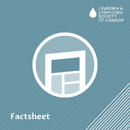Displaying 41 - 50 of 620
Chronic lymphocytic leukemia (CLL)
Updated:
Learn more about Chronic lymphocytic leukemia (CLL) and the resources we have available.
Leukemia
Acute myeloid leukemia (AML)
Updated:
Learn more about Acute myeloid leukemia (AML) and the resources we have available.
Leukemia
Chemotherapy
Updated:
An overview of what chemotherapy is, how it works, how it is given, side effects, and questions to ask your healthcare team.
Treatment and side effects
How we decide which projects to fund
Updated:
Learn more about our scientific review panels and medical and scientific advisory committee.
Brad Levy
Updated:
Let’s Talk about Sex, Baby: Reflection on how sexual health should be a part of holistic cancer care and emphasizes the importance of honest, compassionate conversations for both the patient and their partner.
Waldenstrom macroglobulinemia
Updated:
Learn more about waldenstrom macroglobulinemia and the resources we have available.
Lymphoma
Physician Scientist Fellow Award
Updated:
The intent of the Physician Scientist Fellow Award is to encourage early-stage specialist clinicians to pursue a career in blood cancer research.
Pediatric Blood Cancer Research Innovation Grant
Updated:
Canadian researchers are invited to submit proposals to The Leukemia & Lymphoma Society of Canada’s Pediatric Blood Cancer Research Innovation Grant Competition.
Blood Cancer Quality of Life Grant
Updated:
Canadian researchers are invited to submit proposals to The Leukemia & Lymphoma Society of Canada’s Blood Cancer Quality of Life Grant Competition.
Lymphoplasmacytic Lymphoma (LPL) and Waldenstrom Macroglobulinemia (WM)
Updated:
Lymphoplasmacytic lymphoma (LPL) and its related condition, Waldenström macroglobulinemia (WM), are slow-growing subtypes of non-Hodgkin lymphoma.
Lymphoma
